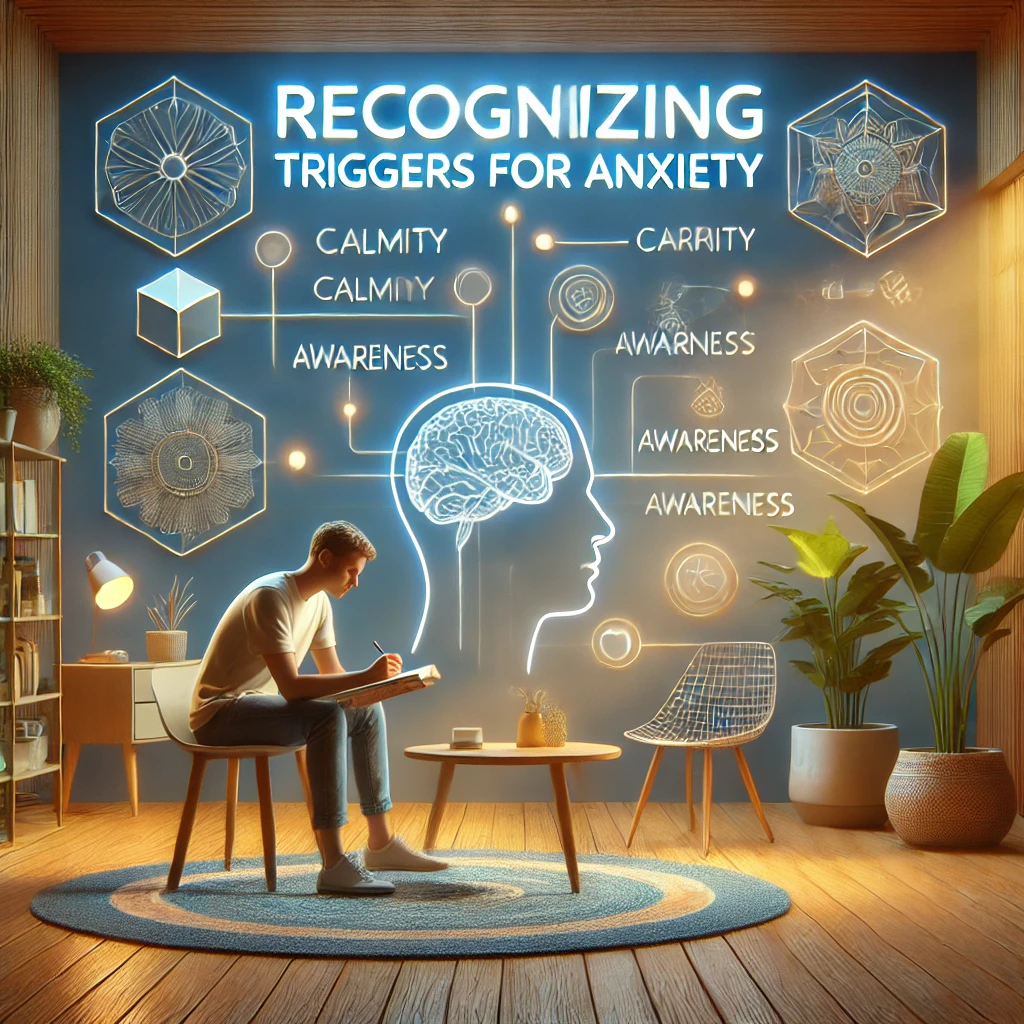Recognizing triggers for anxiety is a crucial step in managing stress and maintaining emotional well-being. I’ve learned that understanding what sets off my anxiety can empower me to respond more effectively. In this article, I’ll share insights and strategies to help you identify your anxiety triggers, enabling you to take control of your mental health.
Why Recognizing Triggers is Important
Contents
Understanding anxiety triggers is essential for anyone dealing with anxiety. Triggers can be specific situations, thoughts, or feelings that provoke anxiety symptoms. By recognizing these triggers, I can develop coping strategies that help me manage my anxiety more effectively.
Benefits of Identifying Triggers
- Increased Self-Awareness: Knowing what triggers my anxiety helps me understand my emotional responses better. This self-awareness allows me to prepare for potential challenges.
- Improved Coping Strategies: Once I identify my triggers, I can create tailored coping strategies to manage my reactions effectively.
- Reduced Anxiety Symptoms: By avoiding or preparing for known triggers, I often experience fewer anxiety symptoms, leading to a more balanced life.
Common Anxiety Triggers
Anxiety triggers can vary widely from person to person. Here are some common triggers I’ve encountered and that many others experience:
1. Stressful Life Events
Major life changes such as moving, job loss, or the death of a loved one can trigger significant anxiety. I find that acknowledging these events helps me process my feelings.
2. Health Concerns
Worrying about health issues can be a significant trigger for many people, including me. When I experience physical symptoms, I often find myself spiraling into anxious thoughts about what they might mean.
3. Financial Stress
Concerns about money—whether it’s paying bills or saving for the future—can provoke anxiety. I’ve learned that budgeting and seeking financial advice can help alleviate some of this stress.
4. Social Situations
Social interactions can be daunting for those with social anxiety. For me, attending gatherings can sometimes lead to feelings of discomfort and worry about how I’m perceived by others.
5. Negative Thinking Patterns
I’ve noticed that negative self-talk often triggers my anxiety. When I focus on worst-case scenarios or criticize myself harshly, my anxiety levels rise significantly.
How to Identify Your Anxiety Triggers
Identifying personal triggers takes time and reflection. Here are some strategies that have helped me recognize what sets off my anxiety:
1. Keep a Journal
I find journaling to be a powerful tool for identifying patterns in my emotions and behaviors. Writing down my feelings daily helps me pinpoint situations that trigger my anxiety.
2. Reflect on Past Experiences
I take time to think about past experiences that have caused me stress or anxiety. Understanding how these events affect me today can provide valuable insights into my current triggers.
3. Talk to Someone
Discussing my feelings with trusted friends or family members often reveals patterns I might not see on my own. Sometimes, they can offer perspectives that help clarify what triggers my anxiety.
4. Observe Physical Reactions
I pay attention to how my body reacts in different situations. Increased heart rate, sweating, or shallow breathing often indicate that I’m experiencing an anxiety trigger.
Common Internal and External Triggers
Anxiety triggers can be both internal and external factors affecting our emotional state:
Internal Triggers
- Thought Patterns: My thoughts can create significant stress; negative self-talk often leads to increased anxiety.
- Physical Sensations: Sometimes, certain physical sensations—like a racing heart—can trigger anxious thoughts about health or panic attacks.
- Past Trauma: Memories of traumatic events can resurface unexpectedly, leading to heightened anxiety responses.
External Triggers
- Environmental Stressors: Cluttered spaces or chaotic environments can heighten my feelings of overwhelm and trigger anxiety.
- Social Interactions: Engaging in conversations with unfamiliar people often makes me anxious, especially in large groups.
- Media Exposure: Consuming distressing news or social media content can trigger feelings of helplessness and increase my overall anxiety levels.
Developing Coping Strategies
Once I’ve identified my triggers, developing coping strategies becomes crucial for managing them effectively:
1. Mindfulness Practices
I practice mindfulness techniques like meditation and deep breathing exercises to help ground myself when faced with triggers. These practices allow me to stay present and reduce anxious thoughts.
2. Cognitive Behavioral Techniques
Cognitive Behavioral Therapy (CBT) has been instrumental in helping me challenge negative thought patterns associated with my triggers. By reframing these thoughts, I can reduce their impact on my emotions.
3. Establishing Routines
Creating daily routines helps provide structure in my life, making it easier to manage stressors as they arise. Consistency offers comfort during uncertain times.
4. Seeking Professional Help
Sometimes, talking to a therapist provides invaluable support in identifying and managing triggers effectively. Professional guidance has helped me navigate complex emotions and develop personalized coping strategies.
Overcoming Challenges in Recognizing Triggers
While recognizing triggers is beneficial, challenges may arise:
1. Difficulty Identifying Triggers
Sometimes it’s hard to pinpoint what specifically causes my anxiety due to overwhelming feelings or lack of clarity in stressful situations. Keeping a detailed journal has helped clarify these instances over time.
2. Fear of Confrontation
Admitting certain triggers may require confronting uncomfortable truths about myself or situations in my life that need change. Embracing vulnerability has been key to overcoming this fear.
3. Resistance to Change
Identifying triggers often means making changes in habits or routines that feel uncomfortable at first. However, embracing change is necessary for growth and managing anxiety effectively.
Conclusion
Recognizing triggers for anxiety is an empowering step toward managing stress and improving mental health overall. By understanding what provokes our anxious feelings, we can develop effective coping strategies tailored to our needs.




